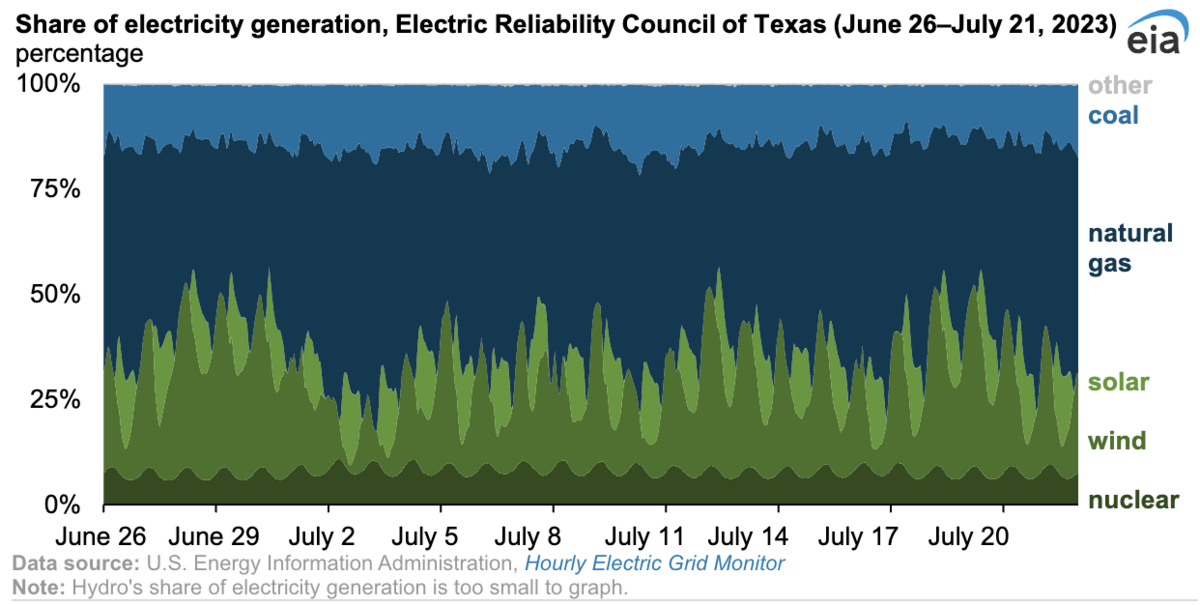In Texas, it has been a hot summer. Scorching hot. Even record-breaking hot.
In Austin, the capital located right in the heart of the gargantuan state, temperatures reached triple digits for 40 straight days, a streak that shattered the previous record of 27 days in 2011. Since 2011, the populations of Austin, and Texas, have grown at a faster rate than anywhere else in the country. So, 40 straight days of triple-digit heat means much higher and sustained electricity demand.
According to the Energy Information Administration, Texas’s electricity grid operator, the Energy Reliability Council of Texas (ERCOT), regularly broke demand records through June and July. The hourly demand record of 79,830 MWh set in July 2022 was surpassed each day between June 26 and 29 this year, which saw a demand over 80,000 MWh. That record was then eclipsed on July 12, 13 and 17. Then, on July 18, hourly energy demand reached 82,579 MWh. Hard to believe when only a month earlier the record was 3,000 MWh less.
Texas prides itself as an oil and gas state, with some coal to boot. Fossil fuel dominance is a point of pride for legacy energy leaders in the Lone Star State. However, the state has quietly been adding loads of solar and wind capacity in recent years — more than 4,000 MW between September 2022 and May 2023 —and when the heat got hottest this year, it was solar and wind that stepped up in critical ways. According to EIA, during the days of record-breaking demand, solar and wind combined provide near or more than 50% of the system’s electricity generation. This might excite renewable energy advocates, but what might also excite the fiscally conservative is just how cheaply that energy came.
In previous hours of such high, record-breaking demand, like in Aug. 2019 and Aug. 2022, renewable and “non-fossil-fuel” energy sources never contributed more than 50% to ERCOT’s total generation. This summer brought a lot of heat, and lot of misery to Texans; however, the silver lining here is that we now have evidence that even the oil and gas loving Lone Star State is embarking on a new, reliable and renewable energy paradigm.










